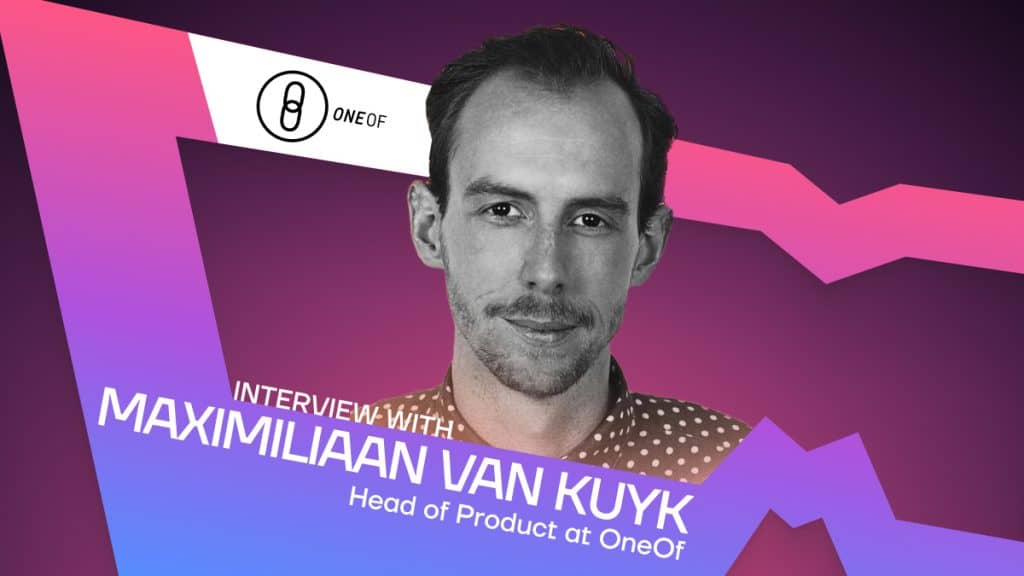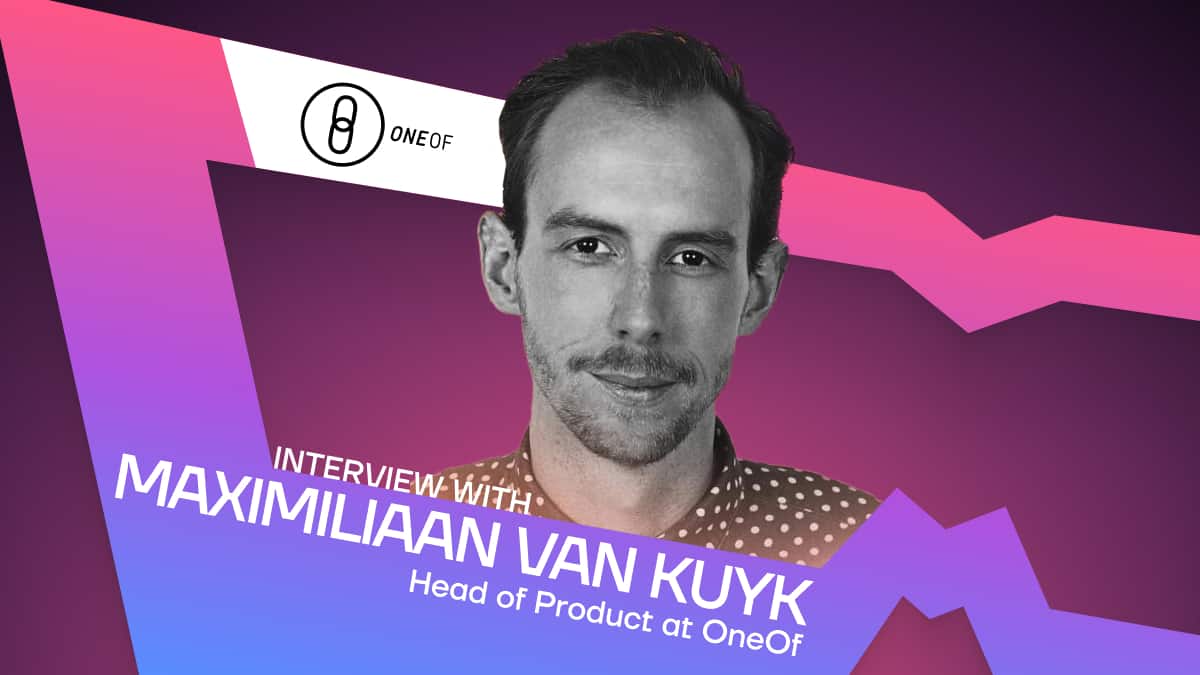
Loyalty programs are a key strategy for brands to retain and attract customers, especially in a competitive and dynamic market. One example of a successful loyalty program is the McDonald’s app, which has over 40 million downloads and offers users rewards such as free food and discounts. But how can brands go beyond the traditional loyalty program and create personalized and engaging experiences for their customers?
One possible answer is web3 technology, which enables brands to connect with customers through decentralized platforms that offer more transparency, security, and innovation. Web3 can also allow customers to own and control their data, preferences, and rewards, creating a more loyal and trusting relationship with brands.
To learn more about how Web3 technology can transform loyalty programs, Metaverse Post interviewed Maximiliaan van Kuyk, Senior Vice President and Head of Product at OneOf, the web3 company that connects brands and celebrities with over 100 million consumers.
OneOf’s OnePlatform is the solution for businesses that want to leverage the power of web3. It offers a suite of tools that enable businesses to create engaging loyalty programs, innovative marketplaces, and insightful customer analytics. With OnePlatform, they can tap into the potential of the decentralized web and meet the evolving needs of the modern consumer. Some of the clients of OneOf include eBay, Spotify, Warner Music Group, American Express, and Snapple.
How did your background lead to your role in OneOf? Can you share the journey that brought you to the web3 and NFT space and, ultimately, to the company?
My blockchain career began back in 2013 when I founded a voting platform, V Initiative, that ran on top of Bitcoin using colored coins. This was an OG blockchain before Ethereum was more than conversations at Bitcoin meetups. Colored coins made Satoshis unique and trackable similar to an NFT, so you could say we were in the NFT space in some ways (obviously, there are a lot of differences there).
Since then, I’ve co-founded several other startups and worked as a product lead in the web2 and web3 arenas. One of the startups was a travel rewards game that transitioned me into my more recent career. Before OneOf, I was working on a music loyalty platform. This made my transition to OneOf, which launched initially as a Music NFT marketplace, make a lot of sense. I also helped co-found a fintech marketing payments startup OTH network before joining OneOf, and it is still growing today.
Between my long-standing knowledge of the blockchain and web3 technology, and my experience in the music and loyalty space, I’ve been pretty well positioned for the Head of Product, SVP role at OneOf, where we are currently building and launching a SaaS Web3, loyalty and commerce platform.
Could you provide insights into how the idea for OneOf came about and how it was developed? What were the key factors or inspirations behind the project?
Many of OneOf’s product features stem from a dynamic of user feedback and the market. However, when we talk about the OnePlatform that OneOf is currently building, this came from the fact that all the brands we were interacting with on our own marketplace wanted a copy of our software for themselves. Added to the fact that the partnered company TAP Network had an existing Web3 loyalty platform; it just made sense to bundle the technology stack together and offer it to enterprise brands.
Loyalty programs have become increasingly important for brands, with consumers seeking hyper-personalized experiences. How can brands leverage Web3 technology to build robust loyalty programs that truly instill loyalty among consumers?
Web3 supercharges loyalty systems with liquidity and personalization for the end consumer because the rewards can now be owned and traded. As time passes, it is the logical next step for all loyalty programs. We believe it will become very evident to consumers if brands do not offer these kinds of features; consumers won’t be as excited and engaged.
Could you share insights into how personalization and peer-to-peer engagement systems can modernize loyalty programs and effectively engage new consumers?
One of the more simplified examples is if a customer earns a loyalty reward through a purchase or engaging with the brand, but it is not a useful reward to them; they have the opportunity to trade it with another customer who has yet to earn this loyalty reward. This peer-to-peer system allows each customer to receive the rewards that are most valuable to them.
Using the OnePlatform, brands can now design much more than the simple 5% back in points for spending – typical amongst the legacy reward systems and drive engaging metrics.
What observations have you made about the preferences and expectations of the new generation of consumers when it comes to loyalty programs? What do they value most in exchange for their loyalty?
They value ownership and flexibility. Several consumers have begun to get used to the kind of transparency and open lines of communication inherent with the ethos of Web3.
Lin Dai, OneOf’s CEO and co-founder, will be speaking about the Future of Brand Loyalty at Cannes Lion. Can you give us a glimpse into what attendees can expect to learn from your session? What are the key insights or trends you will be highlighting?
Lin Dai will be speaking at the MasterCard Villa, where we’ll be hosting a luncheon for various CEOs, CMOs, and industry leaders discussing the Future of Technology, Culture, and Loyalty, including executives from e.l.f, Sony Music, and Brave Software. We’ll be diving into conversations around the convergence of blockchain, advertising, marketing, privacy, and how loyalty programs can foster consumer engagement, experience, and revenue.
In the Web3 era, how can blockchain technology and NFTs play a role in transforming loyalty programs?
It enhances liquidity ownership and transferability for the entire program, and if deployed correctly, all under the brand’s control.
How do you see loyalty programs evolving in the near future, and what role will web3 technology play in shaping their development?
The future of loyalty and web3 technology are intrinsically connected. Having your loyalty system built in web3 means being part of a much bigger ecosystem that allows brands to create unique cross-promotional utility and rewards. I see a near future where large brand loyalty platforms interact with each other.
With OneOf’s focus on connecting consumers to brands and celebrities, how do you envision the integration of influencer marketing and loyalty programs in the Web3 landscape? Are there any notable examples or strategies that you can share?
The largest influencers in the world are always looking to reward their fans for engagement. The systems we build in web3 enable them to create a much more engaging reward program that will ensure much stronger brand loyalty. We have seen the tip of the iceberg with influencers launching NFT projects, but most of those have failed miserably because of the lofty promises and lack of tools to create ongoing value for the fans.
What are some challenges or obstacles that you foresee in the widespread adoption of web3-based loyalty programs? How is OneOf addressing these challenges to drive adoption and create value for its partners?
One of the biggest challenges is onboarding. OneOf has tackled this with its own wallet management infrastructure that makes the web3 element of the system almost invisible to the user who doesn’t want to worry about it while allowing those who do to take full control.
Looking ahead, what are some upcoming initiatives for OneOf that you are excited about? How do you see the company’s role evolving in the loyalty program ecosystem?
Unfortunately, I cannot speak on some of the most exciting ones yet. However, we do have really exciting partnerships with American Express, MasterCard, and Warner Music Group, to name a few, where the initial phases are already in the works, and the next few phases of those partnerships are going to create a huge backdoor to onboarding millions of people into the space.
Read more:
Read More: mpost.io










 Bitcoin
Bitcoin  Ethereum
Ethereum  Tether
Tether  XRP
XRP  Solana
Solana  USDC
USDC  Dogecoin
Dogecoin  Cardano
Cardano  TRON
TRON  Lido Staked Ether
Lido Staked Ether  Wrapped Bitcoin
Wrapped Bitcoin  Sui
Sui  Wrapped stETH
Wrapped stETH  Chainlink
Chainlink  Avalanche
Avalanche  Hyperliquid
Hyperliquid  Stellar
Stellar  Shiba Inu
Shiba Inu  LEO Token
LEO Token  Hedera
Hedera  Bitcoin Cash
Bitcoin Cash  Toncoin
Toncoin  Litecoin
Litecoin  Polkadot
Polkadot  USDS
USDS  WETH
WETH  Monero
Monero  Binance Bridged USDT (BNB Smart Chain)
Binance Bridged USDT (BNB Smart Chain)  Wrapped eETH
Wrapped eETH  Bitget Token
Bitget Token  Pepe
Pepe  Pi Network
Pi Network  Ethena USDe
Ethena USDe  Coinbase Wrapped BTC
Coinbase Wrapped BTC  WhiteBIT Coin
WhiteBIT Coin  Bittensor
Bittensor  Dai
Dai  Uniswap
Uniswap  Aave
Aave  NEAR Protocol
NEAR Protocol  Aptos
Aptos  OKB
OKB  Jito Staked SOL
Jito Staked SOL  Ondo
Ondo  BlackRock USD Institutional Digital Liquidity Fund
BlackRock USD Institutional Digital Liquidity Fund  Cronos
Cronos  Tokenize Xchange
Tokenize Xchange  Ethereum Classic
Ethereum Classic